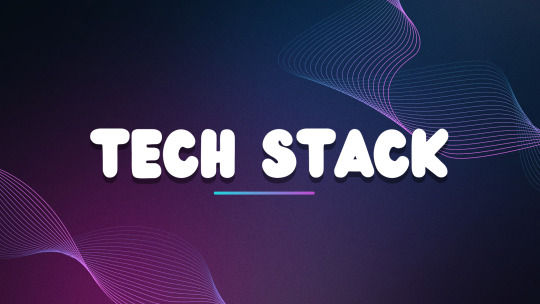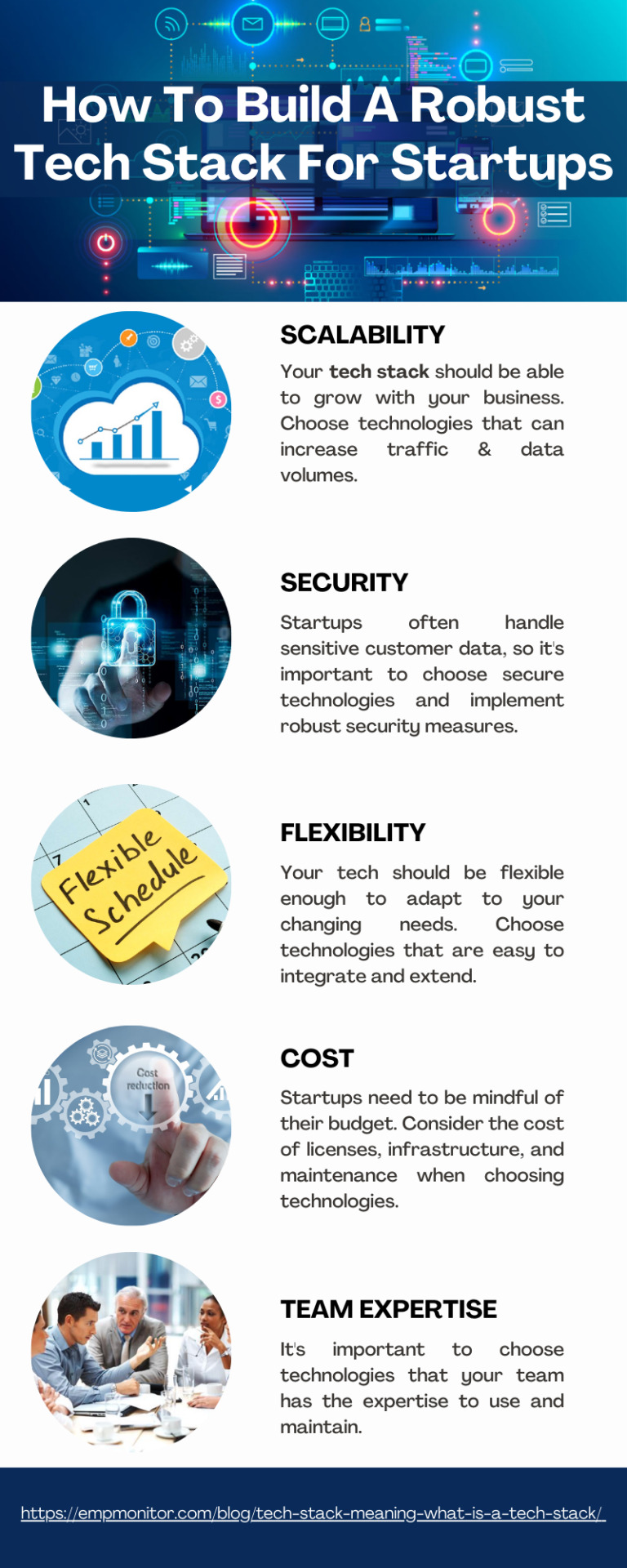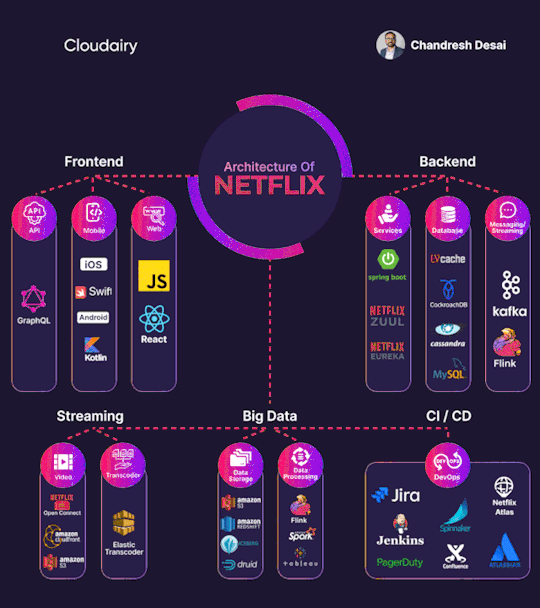#tech stack
Explore tagged Tumblr posts
Text
Guys, I just saw this cute website called TechStacks on Reddit! It visualizes the relationship with different tools. It looks like it's in the early stages right now.
19 notes
·
View notes
Text

Leveraging Technology Consulting to Enhance CRO Strategies
Explore how tech consulting can optimize conversion rates with the right tools and strategies.
Source: https://cro.media/insights/strategies/leveraging-technology-consulting-enhance-cro-strategies/
In today's digital landscape, technology consulting is a critical driver of innovation and efficiency for businesses aiming to thrive in the competitive market. A technology consultant helps organizations integrate the latest tech solutions, optimize operations, and plan for future growth. For businesses focusing on improving their online presence, especially e-commerce, conversion rate optimization (CRO) can significantly benefit from the strategic input provided by a tech consultant. By enhancing both backend systems and customer-facing interfaces, tech consultants enable organizations to make data-driven decisions and streamline user experiences, directly impacting conversion rates.
Aligning Technology with CRO Objectives
Technology consulting focuses on advising businesses on how to adopt, implement, and optimize technology solutions. For e-commerce platforms, the ultimate goal is to drive more visitors and convert them into paying customers. This is where CRO plays a central role. A tech consultant can guide businesses in adopting the right tools and technologies—such as CRM systems, analytics software, and A/B testing platforms—that directly influence user behavior and interaction. These tools help businesses understand consumer patterns, track user engagement, and make necessary adjustments to improve the overall conversion process.
Optimizing Tech Stacks to Boost Conversion Rates
A tech stack is the combination of technologies a business uses to run its digital operations, from website development to customer relationship management. The right tech stack ensures seamless user experiences and backend efficiency, which are crucial for CRO. Tech consultants help businesses select and integrate these technologies. For example, they might recommend analytics tools like Google Analytics or Hotjar to understand customer behavior better or advise on automation tools that speed up checkout processes, reducing cart abandonment rates.
By focusing on choosing the optimal tech stack, tech consultants help businesses eliminate bottlenecks that can lower conversion rates, such as slow-loading pages or inefficient checkout systems. In turn, this leads to a smoother user journey, reducing friction points that hinder conversions.
Data-Driven Decisions: The Power of Analytics in CRO
One of the major advantages of working with a technology consultant is their ability to enhance a company's data analytics capabilities. With accurate data, businesses can perform in-depth analysis to understand what drives their customers and how they can optimize their websites to increase conversions.
A technology consultant can help implement advanced data analytics tools to capture user behavior insights—such as how visitors interact with content, where they drop off in the sales funnel, and which areas need improvement. This data empowers businesses to make informed decisions, test hypotheses, and refine strategies to improve conversion rates. >“In CRO, this iterative process of testing and optimizing is essential for continual growth.”
In CRO, this iterative process of testing and optimizing is essential for continual growth. Learn more about Shopify CRO audits.
Automating Workflows to Improve Efficiency
CRO is not just about front-end user experience; it also involves optimizing backend processes that can impact the customer journey. For example, a tech consultant may advise on automating email marketing campaigns or integrating AI-powered chatbots to engage visitors in real time. Automation can reduce response times, personalize interactions, and provide users with immediate support, all of which are essential for increasing conversion rates.
By streamlining workflows through automation, businesses can save time, enhance the customer experience, and ultimately push more visitors through the conversion funnel. Tech consultants specializing in automation identify key touchpoints where technology can be implemented to reduce manual labor, boost productivity, and ensure more consistent interactions with customers. Explore our Shopify automation services.
Enhancing Security to Build Trust and Increase Conversions
Cybersecurity is a significant concern for online businesses, and any security vulnerabilities can directly impact conversion rates by undermining consumer trust. A tech consultant can conduct thorough security assessments and ensure that a website is protected against potential breaches, thereby safeguarding customer data. This is particularly important for e-commerce businesses that handle sensitive financial information.
By prioritizing cybersecurity and compliance with data protection regulations (such as GDPR and PCI-DSS), tech consultants help businesses build trust with their customers. A secure, trustworthy site is more likely to convert visitors into paying customers, as consumers are more confident about making purchases when their information is protected.
Streamlining User Experience for Higher Conversion Rates
CRO is heavily reliant on user experience (UX) design, which includes aspects such as website usability, speed, and mobile responsiveness. A technology consultant can offer insights into how to improve the UX design of a website, making it easier for users to navigate, find products, and complete purchases. They can also recommend and help implement UI (User Interface) tools that ensure the design is both aesthetically pleasing and functionally optimized for high conversion.
In addition to UX/UI recommendations, tech consultants can enhance site speed through backend improvements, which directly influences bounce rates and user engagement. Websites that load faster are more likely to keep users engaged and reduce drop-offs during the checkout process—key factors in improving conversion rates. See our Shopify agency services.
Future-Proofing Your Business Through Digital Transformation
The digital landscape is constantly evolving, and businesses that fail to adopt new technologies risk falling behind. A technology consultant’s role in digital transformation is to guide companies through the transition and ensure they remain competitive by adopting the latest tools and strategies.
This future-focused mindset is crucial for CRO, as businesses need to stay ahead of industry trends, such as AI-powered personalization or advanced customer journey analytics. By implementing the right technologies and preparing for the future, businesses can continuously optimize their conversion processes and adapt to changing market dynamics, ensuring long-term success. >“By leveraging the expertise of tech consultants, businesses can make strategic technology decisions that streamline operations, enhance customer experiences, and ultimately improve conversion rates.” Contact us to discuss your needs.
In summary, technology consulting and CRO are closely intertwined in today's digital marketplace. By leveraging the expertise of tech consultants, businesses can make strategic technology decisions that streamline operations, enhance customer experiences, and ultimately improve conversion rates. With the right tools and approach, tech consultants help organizations optimize both their backend and frontend systems, ensuring they stay ahead of competitors and continue to drive growth.
0 notes
Text
From Startup to Scale: A No-Nonsense Guide for Real-World Growth

Let's be real, choosing a tech stack is like picking what to eat at an all-inclusive resort. There are so many options, and while it might seem tempting to just pile everything onto your plate, you know that's a recipe for disaster. Similarly, you can't just pick every trendy tool out there for your business. If you do, you might end up with a bloated, dysfunctional mess that doesn't do anything particularly well.
The goal here is to help you pick the right tech stack for your business, allowing it to scale efficiently without giving you heartburn. Whether you're a startup just figuring things out or an enterprise looking to streamline, this guide is for you.
The Tech Stack Basics: What Are We Even Talking About?
Let's get one thing straight: a "tech stack" is not a literal pile of technology (though that would be cool). It's the tools, programming languages, and frameworks your business uses to build and run applications. Think of it as your company's digital toolbox. And just like with real tools, you don't use a chainsaw to assemble IKEA furniture—so you need to pick the right tools for the job.
Your tech stack is always divided into two parts
Front-end
This is the stuff your customers see and interact with. It's like the shiny chrome on a sports car—it looks nice, but if it doesn't perform well, people will quickly notice.
Common tools: React, Vue.js, HTML, CSS
Back-end
This is the engine of your operation. The invisible stuff powers your business and keeps everything running smoothly.
Common tools: Node.js, Python, Ruby on Rails
But enough with the definitions—let's get into how you can pick the right tech stack for your business. Spoiler alert: there's no one-size-fits-all answer.
Start with your Business needs (not your cousin's tips)
It's tempting to go with whatever your cousin or that random guy on LinkedIn is raving about, but let's be honest—just because a tech tool works for them doesn't mean it's the right fit for you. Would you wear your cousin's jeans? No. So don't copy their tech stack, either.
First things first: what are your actual business needs? Are you a startup trying to build the next Uber for cat-sitting (we've all thought about it), or are you an established company looking to streamline operations? Here's what you need to consider
Your Growth Goals
Are you planning for world domination or just happy to expand locally for now? The tech stack you choose should support both your short-term needs and long-term aspirations.
Your Industry
What industry are you in? If you're in e-commerce, you'll want tools that make online transactions easy and secure. In healthcare, you need technologies that comply with privacy laws like HIPAA. And if you're in finance, good luck with that.
Your Team's Skillset
Who will be using this tech stack? If your team is fluent in Python, don't make them suddenly learn Ruby on Rails unless you want a mutiny on your hands. Pick tools that fit your team's existing skillset—or be prepared to invest in serious training.
Think About Scalability (Because Growth Happens Faster Than You Think)
One minute, you're a cozy little startup, and the next thing you know, your app has gone viral, and your server has crashed more times than you can count. Growth is exciting, but if your tech stack can't handle it, you will have problems. Big ones. Scalability is the magic word here. You need a tech stack that evolve with your business, not one that buckles under pressure. When considering scalability, here is what you need to know
Cloud-Based Solutions
Hosting your infrastructure on cloud platforms like AWS or Microsoft Azure can give you the flexibility to scale up or down based on demand. It's like adding more chairs to the table when unexpected guests arrive—except, in this case, thousands of users are hitting your platform all at once.
Performance
Some programming languages and frameworks are great for large-scale operations. If you're dealing with a high volume of transactions or users, choose something built for speed. Node.js, for example, is known for handling multiple connections simultaneously, making it great for real-time applications like chat apps or online games.
Database Choices
Your database is where all the magic (or chaos) happens. For startups, a simple database like MySQL or PostgreSQL might be enough. Still, as you grow, you'll need something that can handle larger data loads—think MongoDB for non-relational data or Oracle for enterprise solutions.
Don't Forget About Integration (Because No One Likes a Silo)
Ever tried to put together a jigsaw puzzle where none of the pieces fit? That's what it feels like when your tech stack doesn't integrate well with your existing systems. And trust me, nothing grinds productivity to a halt faster than a bunch of disjointed tools that refuse to work together.
When choosing your tech stack, consider how it will integrate with the tools you already use. Does your CRM need to interact with your email marketing platform? Are you planning on syncing your sales data with your accounting software? The right integrations can save you hours of manual work—and possibly your sanity.
Here's the secret sauce: APIs (Application Programming Interfaces). They're like the universal translators of the tech world, helping different tools communicate with each other. When evaluating a new tool, check if it has an API that plays nicely with your other systems.
Example: HubSpot is a great all-in-one marketing platform that integrates with dozens of other tools. HubSpot's smooth integrations can make life much easier if you're already using a CRM or email marketing service.
Budgeting for your Tech Stack (Spoiler Alert: It's going to cost way more than you Thought)
Let's talk about money. Every business has a budget—unless you're backed by a billionaire who's just in it for the fun, in which case, please introduce me. For the rest of the world, picking a tech stack means balancing performance, scalability, and cost. You don't want to go broke paying for shiny new tools that only make things marginally better. Here's the deal: open-source technologies like React or Node.js are great because they're free. Yes, free! But there's a catch-free doesn't always mean zero cost. You must still consider maintenance, updates, and the cost of developers who can work with these tools.
The Airbnb Approach for cost saving
Take Airbnb, for example. The company used Ruby on Rails for its web platform in its early days. Rail is an open-source framework that helped Airbnb get started without sinking too much money into licensing fees. As the business grew, the team heavily invested in infrastructure and switched to React for the front end to handle the scaling needs of their user base. The lesson here? Start small with cost-effective solutions, and be prepared to invest in your tech stack as you grow.
Now, let's talk about enterprise-level tools. These often come with hefty licensing fees. If you're considering Salesforce or Oracle, know you're entering premium territory. These tools provide advanced features, but they come at a price. If you're a small business, this might not make sense yet—but for larger operations, these solutions can pay off in the long run by streamlining processes and reducing human error.
Shopify's Early Tech Stack Struggles
Shopify initially relied on PHP and MySQL to power its platform, which worked fine when serving smaller e-commerce stores. But as it scaled, it ran into performance issues with large traffic spikes. Shopify then transitioned to Ruby on Rails and focused on horizontal scaling to handle requests more efficiently. The learning is that budgeting for future growth and tech debt will save you headaches later.
Make sure your Stack is secure (or pay the price later)
We've all seen those scary headlines: "Massive Data Breach Exposes Millions of User Accounts." No one wants to be the next headline, especially when the damage to your reputation (and your wallet) can be severe. Security must stick in your mind when choosing a tech stack.
Some technologies are more secure than others. For instance, large enterprises often favor Java for its robust security features. Similarly, Python has excellent libraries for encryption and data security.
But security isn't just about picking a tool; it's about implementing the right practices. Ensure your developers regularly update your tech stack, apply security patches, and follow best practices like two-factor authentication (2FA) and encryption for sensitive data.
Target's Massive Data Breach
Remember Target's massive data breach in 2013? Hackers were able to access 40 million credit card numbers just because of a vulnerability in their network access system. They may have avoided that disaster with more secure protocols and better monitoring practices. Don't be like Target.
Keep an Eye on Trends, But Don't Chase Every Shiny New Tool
The tech world is always changing. Every week, a new "next big thing" promises to revolutionize how we do business. Blockchain, quantum computing, AI, Web3—it's easy to feel FOMO when you hear about these groundbreaking technologies. But just because something is trendy doesn't mean it's the right fit for your business.
The Slack Boom
Look at Slack. It became the go-to communication tool almost overnight, pushing out older tools like email and Skype. It was not only because it was shiny and new. It was because it effectively solved a pain point for businesses, making communication faster and more collaborative. However, not every tool has a lasting impact, like Slack, so pick your tech wisely.
That said, you want to pay attention to trends. In an industry where innovation is key, like fintech or healthcare, you may need to adopt new technologies faster than others to stay competitive. The trick is to strike a balance—stay current without feeling like you must overhaul your tech stack every six months.
The Talent Factor (because even the best Tech is useless without the right people)
You could have the most advanced, scalable, and secure tech stack on the planet, but you're sunk if no one on your team knows how to use it. When choosing your tech stack, consider the talent pool. Can your current developers work with this stack? If not, are you willing to invest in training or hire new developers specializing in those tools?
Netflix's Engineering Talent Strategy
Everybody knows it: Netflix hires the best engineering talent to manage its complex tech stack, which includes everything from Java and Node.js to Kubernetes and AWS. By focusing on hiring top-notch developers, Netflix ensures that their tech infrastructure runs smoothly, scales efficiently, and adapts to new trends.
But let's be real: hiring top tech talent is tough, especially if you're not on Netflix. Tha's why choosing a tech stack that aligns with your team's existing skills is smart. If your team is well-versed in JavaScript, don't force them to learn Python unless there's a compelling reason to switch. You'll save time and money and avoid unnecessary headaches.
Future-proofing your Tech Stack (because the future is coming whether you're ready or not)
Ah, the future. It's unpredictable, exciting, and a little terrifying. When choosing your tech stack, you want to pick tools that will grow with you and adapt to future innovations. No one wants to be stuck with a tech stack that becomes obsolete in two years.
Adobe's Move to the Cloud!
Take Adobe, for example. A few years ago, they shifted from selling standalone software (like Photoshop) to offering Adobe Creative Cloud. This switch to a subscription-based model helped them scale and ensured they could keep up with the industry's shift to cloud computing. They might have fallen behind if they had stuck with the old model.
So, how do you future-proof your tech stack? Look for tools that are modular and flexible. Think of Microservices architecture as one that allows different parts of your system to scale independently. That way, when one part of your app becomes a runaway success (fingers crossed!), you won't need to rebuild your entire system to handle the load.
Concluding Thoughts: The Tech Stack Balancing Act
Choosing the right tech stack balances meeting your current needs, planning for future growth, and monitoring costs. But with the right approach, you can build a scalable tech stack that's secure, and ready to handle whatever comes your way. Remember, it's not about picking the shiniest or most popular tools—it's about finding what works for you and your team.
So, move forward and start building that tech stack! And if you ever get overwhelmed, remember that even Amazon started as a small online bookstore with a simple tech setup. They scaled, and you can, too!
We can put you on track!
Feeling a little overwhelmed by your tech stack choices? Don't worry—we're here to help. Contact our team today for a free consultation, and let's build the perfect stack for your business's future growth.
#tech stack#tech stack guide#business growth technology#scalable tech stack#tech stack integration#front end#back end#budgeting for tech stack#secure tech stack
0 notes
Text
Cursor AI Tech Stack:
Your Essential Blueprint for Coding Success
From beginner to pro:
Simple strategies and expert hacks to maximize Cursor AI's potential
#machinelearning#artificialintelligence#art#digitalart#mlart#ai#datascience#algorithm#bigdata#cursor ai#tech stack
0 notes
Text

What to Look for When Hiring Android App Developers | AIS Technolabs
Discover the key qualifications and skills to seek in Android app developers. Make informed hiring decisions with our essential guide
#Android Development#Hiring Android Developers#Java vs Kotlin#Mobile App Development#Tech Stack#Android SDK#App Security#Cross-Platform Development#AI and Machine Learning#IoT Integration#5G Technology#AR and VR#Developer Skills#Project Management#App Development Trends
0 notes
Text
youtube
Which Tech Stack To Choose In 2023? MEAN Stack Vs MERN Stack | MEAN Vs MERN
RichestSoft, a leader in software development, provides expertise in both MEAN (MongoDB, Express.js, AngularJS, Node.js) and MERN (MongoDB, Express.js, React.js, Node.js) stacks. With a focus on innovation and efficiency, RichestSoft tailors solutions to client needs, leveraging the strengths of each stack. Whether it's MEAN for robust web applications or MERN for dynamic user interfaces, RichestSoft ensures cutting-edge technology for unparalleled results.
0 notes
Text
Navigating the Tech Stack Landscape: Building the Foundation of Modern Software

In the fast-paced world of technology, the term "tech stack" has become a cornerstone in the development and deployment of software applications. A tech stack, short for technology stack, is the combination of programming languages, frameworks, libraries, and tools that developers use to build and run applications. It serves as the foundation upon which digital innovation is built, making it a crucial component for businesses and developers alike. In this article, we will delve into the world of tech stacks, their importance, and the factors to consider when choosing the right tech stack for your project.
Understanding the Components of a Tech Stack
A typical tech stack consists of three main components: the front-end, back-end, and database.
Front-End:
The front-end, also known as the client side, is what the user interacts with directly. It encompasses the visual and user interface elements of an application. Front-end technologies commonly include HTML, CSS, and JavaScript, and they enable developers to create responsive, user-friendly interfaces that users interact with through their web browsers or mobile devices. Popular front-end libraries and frameworks include React, Angular, and Vue.js.
Back-End:
The back-end, or server side, is responsible for the logic and functionality of an application. It handles requests from the front-end, processes data, and communicates with the database. Back-end technologies can vary greatly, with options like Python, Ruby, Java, Node.js, and PHP being commonly used. Frameworks like Ruby on Rails, Django, and Express.js provide pre-built structures and tools to streamline the development process.
Database:
The database is where all the application's data is stored. Databases come in different types, including relational databases (e.g., MySQL, PostgreSQL), NoSQL databases (e.g., MongoDB, Cassandra), and in-memory databases (e.g., Redis). The choice of database technology depends on the specific requirements of the project, such as data structure, scalability, and performance.
The Importance of Choosing the Right Tech Stack
Selecting the appropriate tech stack is a crucial decision that can impact the success of your project in various ways:
Performance:
The right tech stack can optimize your application's performance, ensuring it runs smoothly and efficiently. The wrong choices could lead to bottlenecks and sluggish user experiences.
Scalability:
Scalability is a critical consideration, especially for applications that may experience rapid growth. A well-chosen tech stack can accommodate increased traffic and insider data without requiring a complete overhaul.
Development Speed:

Certain tech stacks enable faster development by providing pre-built tools and libraries. This can result in quicker time-to-market, a significant advantage in competitive industries.
Cost:
The cost of development, maintenance, and infrastructure can vary depending on your tech stack choices. Some technologies may have higher licensing fees or require more powerful hardware, impacting your budget.
Talent Availability:
The availability of skilled developers proficient in your chosen tech stack is essential. You'll need a team capable of maintaining and improving the application as your business grows.
Examples of Common Tech Stack Combinations
There are various common tech stack combinations tailored to different use cases:
LAMP Stack:
Linux (operating system)
Apache (web server)
MySQL (relational database)
PHP (programming language)
The LAMP stack is a classic choice for web development, especially for smaller projects and websites. It's known for its simplicity and cost-effectiveness.
MEAN Stack:
MongoDB (NoSQL database)
Express.js (back-end framework)
Angular (front-end framework)
Node.js (JavaScript runtime)
The MEAN stack is a popular choice for building dynamic and responsive web applications. It's entirely JavaScript-based, simplifying development by using a single language for both front-end and back-end.
MERN Stack:
MongoDB (NoSQL database)
Express.js (back-end framework)
React (front-end library)
Node.js (JavaScript runtime)
The MERN stack is another JavaScript-based choice that's ideal for building modern web applications. It emphasizes a responsive user interface and efficient data handling.
Ruby on Rails:

Ruby (programming language)
Ruby on Rails (back-end framework)
PostgreSQL (relational database)
Ruby on Rails is known for its developer-friendly approach and rapid development capabilities. It's a strong choice for startups and smaller projects.
Wrapping Up
Selecting the right tech stack is a critical decision in the software development process. It impacts the performance, scalability, development speed, and overall success of your project. By carefully evaluating your project's goals, team expertise, scalability requirements, budget, security needs, and integration demands, you can make an informed choice that aligns with your objectives.
Remember that there is no one-size-fits-all solution, and the best tech stack for your project will be unique to your specific needs. Whether you opt for a classic LAMP stack, a JavaScript-based MEAN or MERN stack, or a specialized stack like Ruby on Rails, your choice should reflect the vision and goals of your software application. In the ever-evolving world of technology, staying up-to-date with emerging tech stacks and continuously evaluating and adapting your tech stack can be the key to sustained success in the digital realm.
0 notes
Text

Building a robust tech stack for a startup is crucial for ensuring your business operates efficiently. In this infographic, you will get to know how to build robust tech for startups.
0 notes
Text
The technology stack you choose for your web application development can make or break your business in the fast-paced digital environment of today, where the fight for user engagement and commercial success is fierce. Even while they frequently steal the show, mobile apps are sometimes expensive and require significant marketing resources, which makes them less affordable for small businesses. The sensible option in this situation is a web app. It provides robust capabilities equivalent to mobile apps while avoiding the difficulties of app store listings, giving users the best of both worlds.
#appdevelopment#mobile app development#app development#web development#tech stack#web applications#data driven
0 notes
Text
Exploring the Best Tech Stack for Your Next Project | Insignia Consultancy
Discover the ideal tech stack for your project and make informed decisions with our comprehensive guide on the latest technologies and frameworks.
0 notes
Text

Exciting News! Our latest blog is out now! Discover the Power of Machine Learning App Development! Dive into the world of cutting-edge technology and explore the incredible benefits of Machine Learning App Development. In our latest blog, "Machine Learning App Development Benefits & Tech Stack," we unveil the secrets behind developing intelligent and innovative applications that revolutionize user experiences. Learn about the game-changing advantages of integrating Machine Learning into your app development process and how it can enhance personalization, automation, and efficiency. Get insights into the advanced Tech Stack required for building powerful
applications and gain a competitive edge in the digital landscape. Unleash the potential of Machine Learning and unlock limitless possibilities for your app development journey!
Read the full blog here:
#connect infosoft#Machine Learning#Machine Learning App Development#App Development#benefits#ML#tech stack
1 note
·
View note
Text
Tech Stack | Modernized | insignia
Learn from real-world Looker users and see how they modernized their data tech stack, freeing their employees to focus on business goals.
0 notes
Text
There are people in this world who approach all communication as a form of intellectual combat which is "won" by deliberately providing the most obstructive and least informative possible answer which technically satisfies the precise letter of the stated request, and literally all of them are on Stack Overflow.
2K notes
·
View notes
Text

Custom made stacking display for retro Nintendo consoles made by Chris Coleperson. Source: Facebook.
#nintendo 64#super nintendo#NES#super NES#SNES#N64#retro gaming#nintendo#nintendo aesthetic#hardware#tech#stacking display#N64 cartridges
724 notes
·
View notes
Text
One of the earliest examples of Leo’s “I’ll do my own thing to accomplish our goal without discussing it with my team first” is in episode one. It’s super, super quick, and ultimately inconsequential, but it subtly sets up a great precedent that I think is very interesting.
When the boys need to grab the medallion from Splinter without Splinter noticing, Raph, Mikey, and Donnie huddle together with Raph taking the lead in trying to devise a plan to get the mystic device. Meanwhile, Leo slinks away and grabs the device by clocking the situation (by knowing his father well enough to predict his actions - something he does with each family member multiple times in the series) and making a move on his own.
It works out perfectly fine, and is ultimately the best move, and it’s honestly okay that he didn’t consult everyone for something so small when it’s such a non issue to get it, but it nicely sets up how this tends to go in the series, including how it goes in the movie.
To be honest episode one is actually really good at setting up a lot of things for each character in the long run, this is just one example that caught my attention, as small and unassuming as it is.
#rottmnt#rottmnt leo#rise of the teenage mutant ninja turtles#im just ranting at this point feel free to ignore me I’m tired lol#anyway#Leo constantly just goes off and does his own thing#and yeah honestly his own thing often works??? but he alienates his brothers/team in the process#BUT also this isn’t necessarily a one way street#when Leo DOES try to consult his brothers or give his thoughts on matters he’s not really taken seriously#best example here is bug busters where he CONSTANTLY makes his worries and suspicions known only to have them ignored#so it’s almost understandable that he doesn’t often open up about his thought process when it’s easier to just do it#than to try and fail to justify it#after all it almost always works out for him when he does so why not?#and then the movie happens#and that line of thinking doesn’t quite hold up does it?#BUT ON ANOTHER NOTE#like I said episode one is super good at setting characters up#from showing off Donnie’s preference for tech vs magic/mystic#from showing Mikey’s innate talent for mysticism#from showing Raph’s anxieties and how easily they can stack up#there’s more but I’d have to do a closer deep dive on the ep and man am I tired#so off the head rambles it is for now#sorry everyone for my constant spam of Too Many Words into things that are prob Not That Deep#it’s honestly just fun haha#EDIT: bc I saw someone mention it! yeah all the boys have communication issues through the series and it’s super interesting and realistic#Leo in particular stands out to me here because his communication issues are a constant theme that pop up much more often#but each of them experiences this in some form
871 notes
·
View notes
